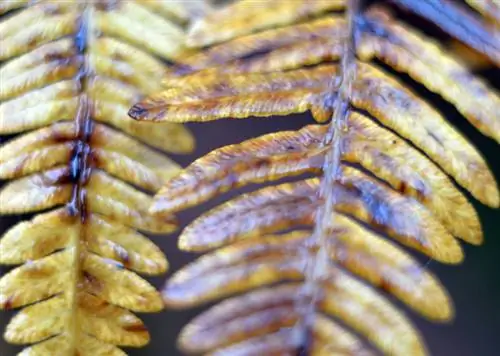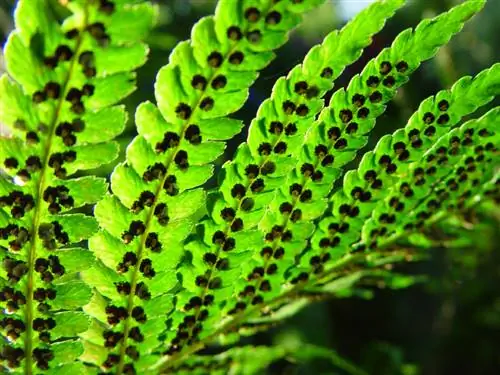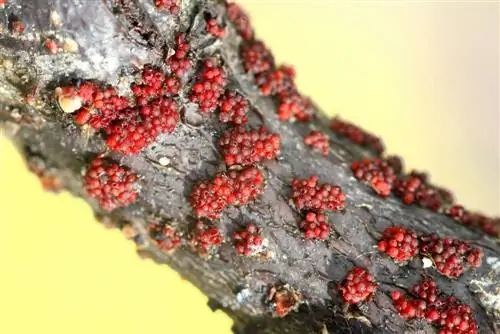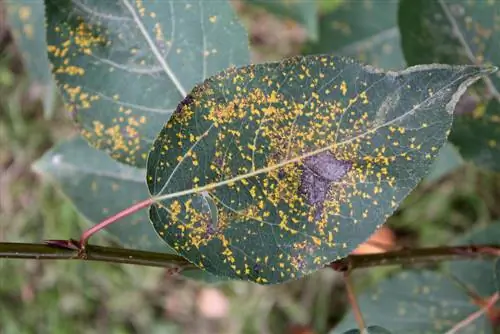- Author admin [email protected].
- Public 2023-12-16 16:46.
- Last modified 2025-01-23 11:20.
When it comes to diseases and pests, ferns can hold a candle to many other plants. They are normally extremely he althy and not very attractive to fungi, pests, etc. But there are exceptions
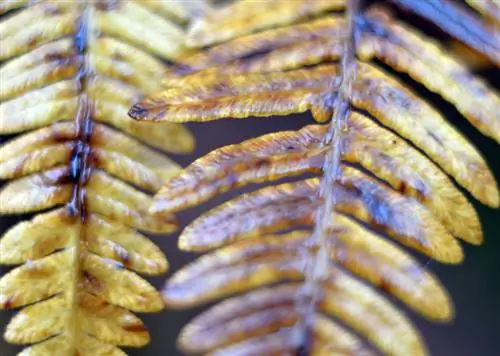
What diseases can affect ferns?
Ferns are usually disease-resistant, but fungal diseases, spider mites, fungus gnats, scale insects and leafworms can occur. To keep ferns he althy, care should be taken to ensure good drainage, only water when the soil layer is dry and the location should be light to shady with high humidity.
Most ferns are disease resistant
Ferns are not usually affected by disease. Fungal diseases occur in the rarest of cases. These are usually caused by care errors, particularly incorrect watering or a location that is too wet and boggy.
Root rot in particular occurs quickly if a fern is watered too generously and frequently and the drainage may not be right. In such a case, the fern can no longer be helped. It is better to prevent this by ensuring good drainage and only watering again when the top layer of soil has dried.
Pests that particularly affect indoor ferns
If the site conditions do not correspond to the fern's wishes, the plant is weakened and pests have an easy time of it. While pests such as snails prefer to stay away from ferns in the wild, pests in the home like to attack a fern. The following pests can make life difficult for him:
- Spider mites
- Sad gnats
- Scale insects
- small leaves
Fighting the pests
Since you don't eat the fern, you can radically combat the pests with alcohol. Soft soap also helps if you apply it to the fronds using a hand sprayer. A combination of soft soap and spirit is best. The fungus gnats are dragged to their doom with yellow plates (€9.00 on Amazon).
Remove diseased fronds and adjust care
In many cases the fern can still be saved. One or two brown fronds don't mean the end of him. Now it's time to act:
- cut off the diseased fronds
- Check drainage and repot/transplant if necessary
- Choose a new location if necessary: bright, partially shaded to shady, high humidity
- fertilize lightly if necessary
Tips & Tricks
Many newbies confuse the spores on the underside of the fronds with fungi or a dangerous disease. But they are completely normal and are not an indication of care errors, but rather that the fern is reproducing.

